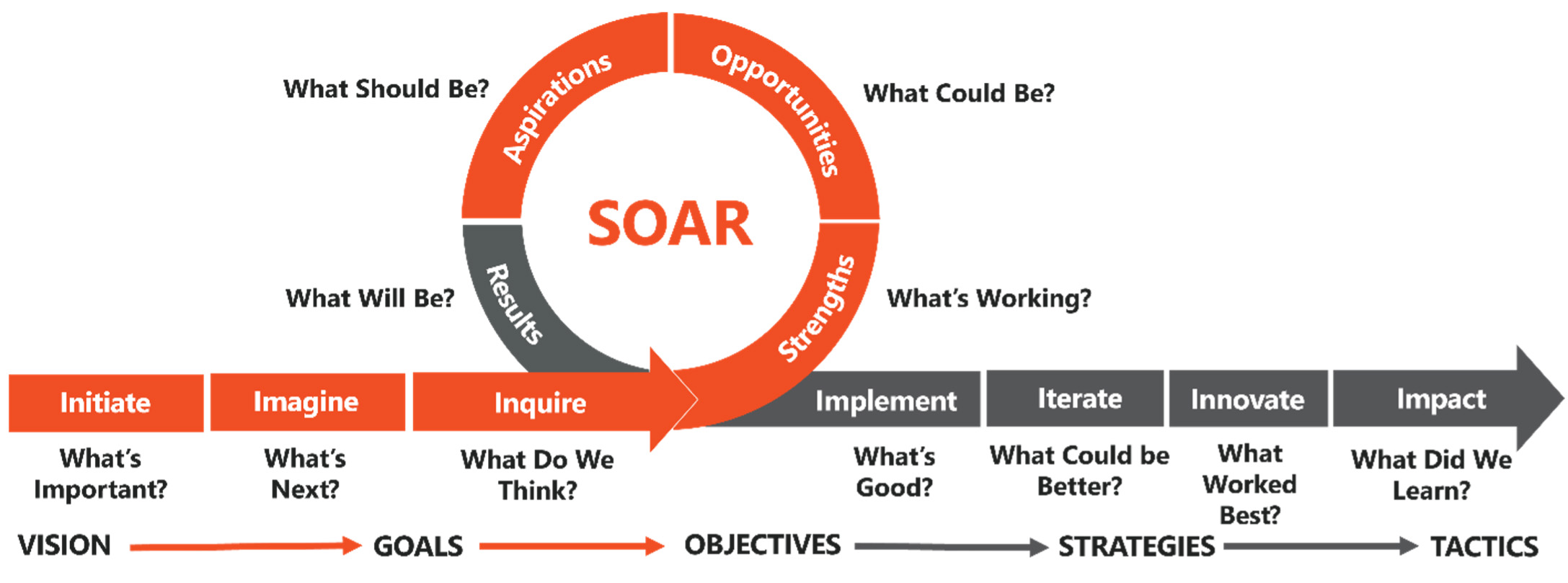The EdTech Navigator: A Strategic Planning Framework for New Learning Spaces
Contemporary academic institutions face many challenges when planning new technology or applications like hybrid learning. Overcoming resistance to change and fostering an environment that embraces innovation can be challenging. However, keeping pace with these advancements while ensuring they align with institutional and pedagogical goals using traditional planning models is difficult.
Addressing these challenges requires a new strategic approach to innovative planning, stakeholder engagement, continuous professional development, and a commitment to ongoing evaluation and adjustment.

EdTech Navigator Framework © 2024. Craig Park. All rights reserved.
The Edtech Navigator Framework
The EdTech Navigator (ETN) framework stands out in its ability to effectively address these challenges. It ensures that technology integration is not just a process but a strategic one, aligned with educational goals, inclusive of all stakeholders, and responsive to the educational community's changing needs and expectations.
The ETN framework is not just a solution but a catalyst for change. It promotes a culture of continuous improvement and innovation, offering a comprehensive and strategic approach to address these challenges. Embracing change and inclusivity paves the way for a more effective and efficient technology integration process.
The ETN framework is a roadmap to effective strategic planning. It organizes each step to align with determining an initial vision, establishing goals and defining objectives, and then turning the results into actionable strategies and tactical efforts. This seven-step structured approach ensures that every aspect of the planning process is considered and addressed.
1) INITIATE: "What's Important?"
This first step is understanding the current state of learning environments and setting clear, measurable objectives aligned with institutional goals. The process begins by thoroughly assessing current capabilities, technological infrastructure, and pedagogical practices. It engages a team of key stakeholders — faculty, IT/AV support staff, administrators, and students — to understand their needs, experiences, and expectations in technology-supported learning environments.
Defining the "what" and focusing on the "why" of implementing new technologies makes the plan explicit and intentional, with documented roles and processes that are more likely to be carried out. Establishing a standing technology planning team ensures that the plan's "how" is carried out effectively. This first step sets the stage for achieving these goals by developing and articulating clear educational goals for the new model and identifying the technological requirements.
2) IMAGINE: "What's Next?"
The second step begins with the planning team investigating and examining trends. By exploring emerging technologies and envisioning the future of education, this step encourages divergent thinking and consideration of emerging and innovative solutions. It mitigates the risk of adopting technology for its own sake by focusing on benefits, ensuring that the technology adopted is sustainable and aligns with long-term educational goals.
The team explores new technologies, drawing insights from sources like the Gartner Group, AVIXA, and BICSI and the perspectives of renowned futurists like Gayemarie Brown, Dan Burris, Ray Kurzweil, and others. It also includes benchmark resources like FlexSpace.org, HETMA.org, and ETC.org, conducting product research and technology use in other similar institutions. This brings the conversation back to convergent thinking based on real-world applications.